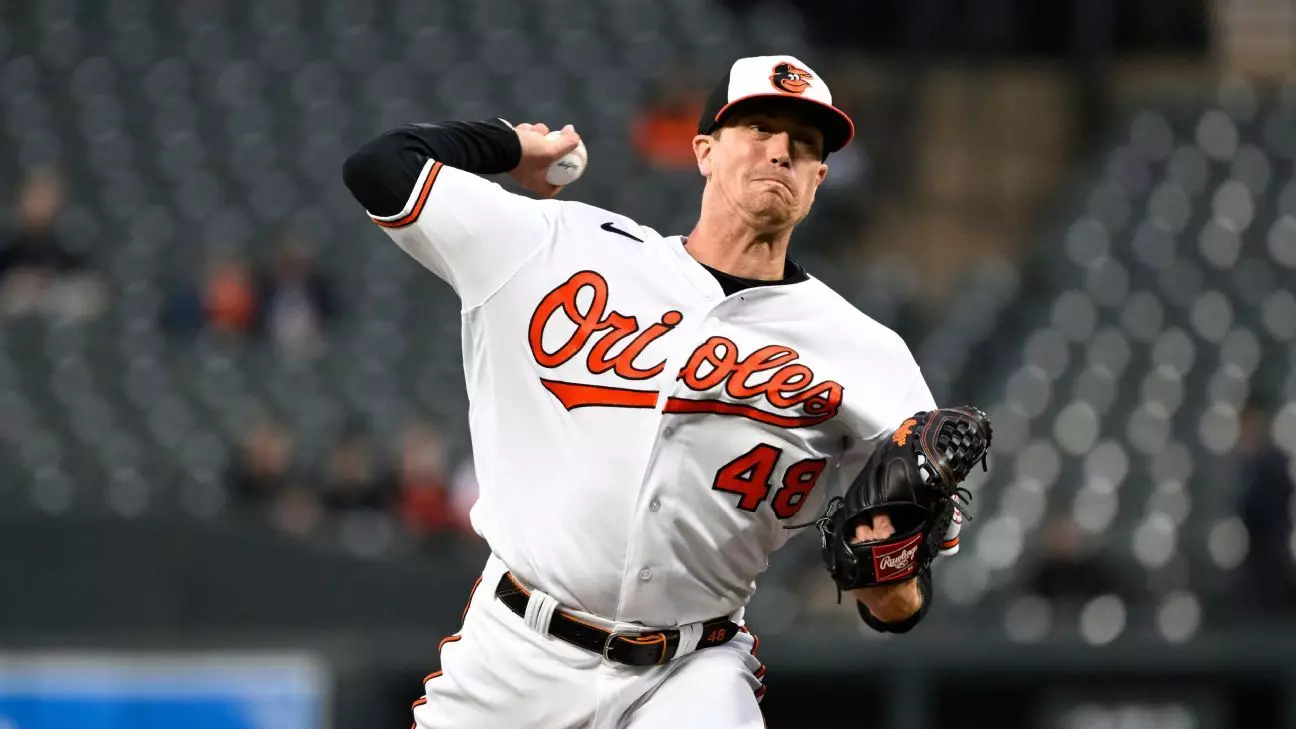The Baltimore Orioles took a significant step on the path to a promising 2024 season by signing veteran right-hander Kyle Gibson to a one-year contract worth $5.25 million, plus potential incentives. This move, welcomed just days before the season opener, reflects the team’s proactive approach to addressing their pitching needs. At 37, Gibson brings both experience and a history of accountability to a rotation that many analysts view as a potential vulnerability for the Orioles, freshly minted from a successful season marked by a surprising 101 victories.
Last season, Gibson showcased reliability by boasting a 15-9 record and a 4.73 ERA over 33 appearances, contributing to the Orioles’ first American League East pennant since 2014 and their return to the postseason after a seven-year absence. His re-signing comes as a response not only to his previous contributions but also serves as a layer of fortification as the team embarks on an ambitious campaign fueled by their spectacular young talent.
Challenges in the Rotation
While Gibson’s acquisition is a positive, it highlights the Orioles’ pressing need to enhance their pitching depth. The offseason roster adjustments included the departure of Corbin Burnes, a key player who had captivated fans with an impressive 2.92 ERA in his sole season with Baltimore and claimed fifth place in the AL Cy Young voting. His absence leaves a palpable gap. The Orioles’ addition of veteran pitchers Charlie Morton and Tomoyuki Sugano, while well-intentioned, raises questions about the age and stamina of the rotation. These moves, amounting to a hefty $28 million, may not seamlessly translate into the aces needed to anchor the lineup.
The situation becomes even more precarious with the recent injury setback of Grayson Rodriguez, the highly anticipated No. 1 starter, sidelined with elbow inflammation. This unfortunate turn of events aggravates the pressure on Gibson—the expectation is for him to stabilize a somewhat shaky rotation rather than to lead it. Notably, despite his capability, Gibson likely won’t fill the role of an ace, making his addition more about ensuring a functional unit rather than creating a dominant one.
Gibson’s Track Record: A History of Durability
What Gibson does offer, however, is consistency. As a former first-round pick from the 2009 draft, he has maintained a remarkable record, averaging at least 25 starts per season for a decade, with nine of those seasons featuring 29 starts or more. This durability can be pivotal for a team looking to mitigate the impact of innings shortages that plagued them last year—no other pitcher matched Gibson’s 169.5 innings pitched last season.
In an environment replete with young talent, Gibson’s experience could serve as a stabilizing force, not just in innings pitched but also in mentoring the Orioles’ burgeoning stars. His presence on the mound may allow for a smoother transition for younger players stepping into prominent roles, as Gibson understands the balance of pressure and performance at this level.
Thus, while the Orioles have room for improvement in the rotation, signing Kyle Gibson might just be the pragmatic answer they need—a blend of veteran savvy paired with a resilience to weather the storms of a demanding 162-game season ahead.

